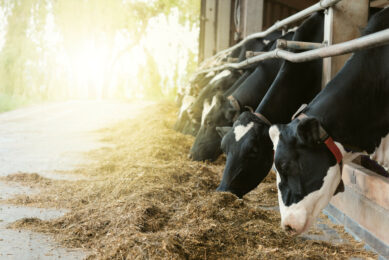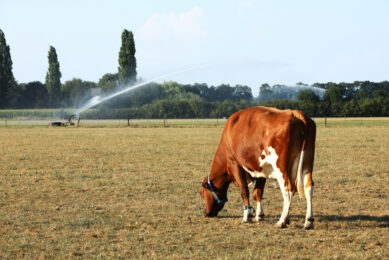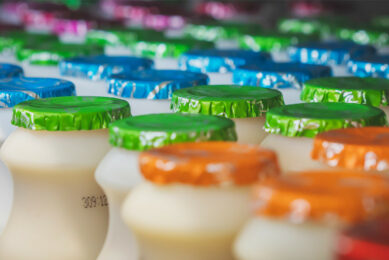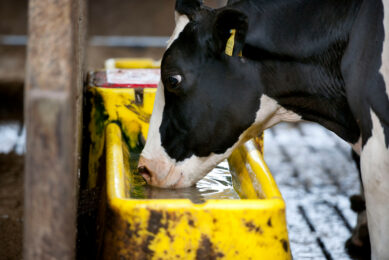Phytogenic feed additives: Proven tool to mitigate heat stress
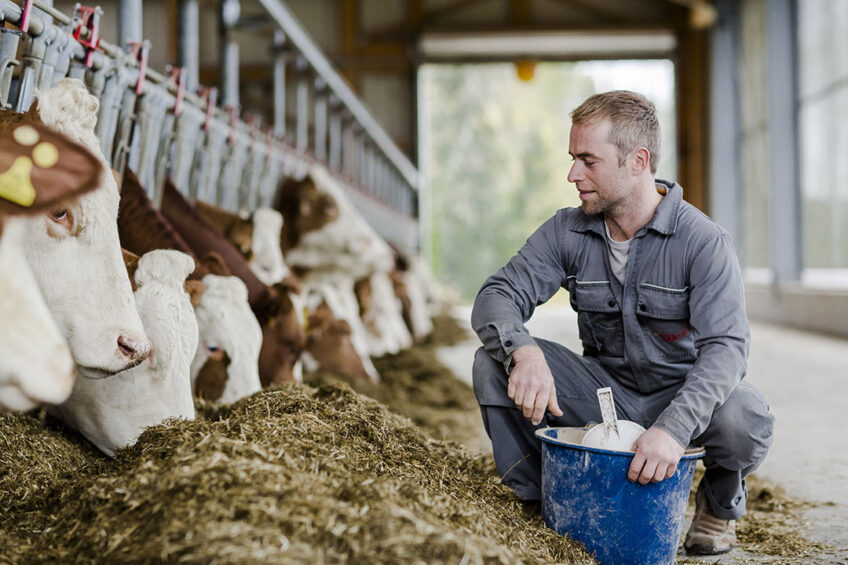
As the global climate changes, heat stress (HS) caused by elevated temperatures is the most challenging environmental stressor resulting in significant economic losses. To alleviate the negative consequences of heat stress, it is advisable to apply some nutritional practices, such as the addition of phytogenic feed additives (PFA), alongside other management measures.
When the environmental temperature exceeds the thermo-neutral zone, and animals can no longer regulate body temperature, most production animal species have reported a substantial decrease in feed intake, body weight gain, and feed efficiency. Climate stressors animals receive, such as thermal radiation, wind speed, and precipitation, are hard to record routinely, while temperature and relative humidity are simple measures. Thus, the most common indicator to estimate the magnitude of HS is based on these 2 factors and is called Temperature Humidity Index (THI) (Figure 1).
Figure 1 – Temperature Humidity Index (THI) for dairy cows.
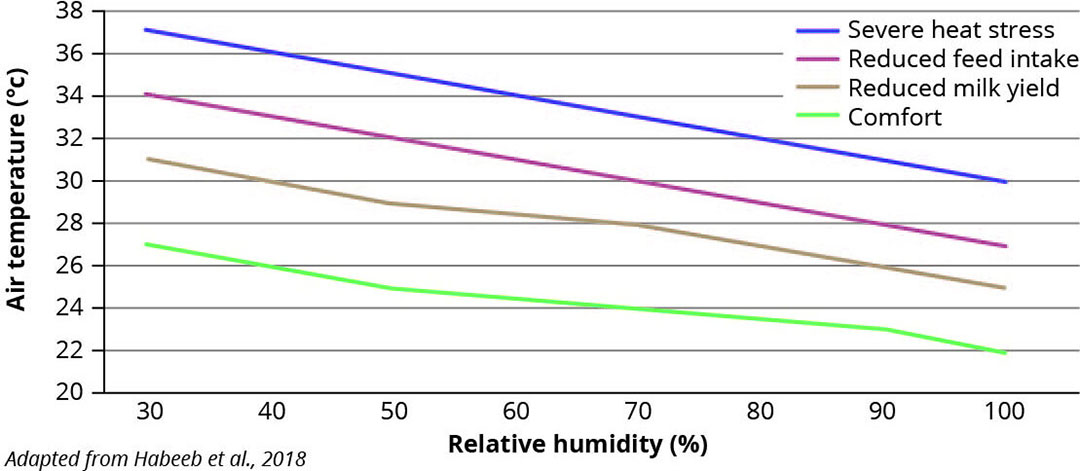
Adverse effects of heat stress
The adverse effects of heat stress manifest in body temperature, intestinal health, appetite, hormone regulation, immune response, and oxidative characteristics. Climate stress impairs physiological responses and alters the production of antioxidant enzymes resulting in increased oxidative stress. By changing the intestinal morphology, climate stress can adversely affect gut health, intestinal barrier permeability, and failure of gut barrier function, resulting in ‘leaky gut syndrome.’ This consequently enhances the passage rate of pathogens, resulting in pathogen penetration and hormone levels in the bloodstream being responsible for decreasing appetite.
Impact in monogastrics
With higher environmental temperatures, poultry tends to experience reduced feed intake. Cellular dysfunction and lipid peroxidation could lead to associated pathologies that negatively impact poultry production performance and welfare, depending on the severity of heat stress. Their rapid metabolic rate and high production, which always remain a priority in poultry husbandry, make poultry more vulnerable to environmental stressors. Environmental stress can negatively affect growth rate, body weight, meat quality, egg quality, egg production, semen quality, and fertility. Climatic variations and heat exposure increase the reactive oxidative species (ROS), leading to inflammation and reduced performance. Exposure of birds to high ambient temperatures has been shown to alter physiological homeostasis, resulting in systemic immune dysregulation and endocrine and electrolyte disorders, and is usually accompanied by increasing mortality.
In swine production systems, the impact of heat stress occurs during the summer season or regularly in locations where an environment of hot temperatures is constant (tropical zones). The adverse effects of heat stress are associated with inconsistent growth rate and feed conversion, decreased carcass composition, reduced fertility and reproduction performance, and increased mortality. These adverse effects are predominantly observed in sows and market hogs.
Impact in ruminants
Cattle maintain a constant core body temperature over various climatic conditions. Under normal conditions, cows have several sources of heat production: basal metabolism, physical activity, rumination and digestion, and production metabolism. Heat stress is observed when cows cannot maintain their body temperature at optimal and comfortable ranges, potentially leading to impaired metabolic functions. High-producing cows are more sensitive to heat stress than low-producers, as they have a higher metabolic status, creating more heat. For example, cows producing 35L/day tolerate threshold temperatures of 5°C higher than cows producing 45L/day.
With heat stress, milk production is reduced by 10 to 35% during warm summer months in Europe. 50% of this performance reduction is linked to decreased feed intake, and the other 50% occurs from a metabolic modification in the body. This is coupled with a complete metabolism change oriented to increasing maintenance requirements. Animals in this state are also subject to other assaults, as discussed in the next section.
Lipopolysaccharides (endotoxins) are a part of the outer membrane of the cell wall of gram-negative bacteria. The lipid A part of this molecule is the toxic part. Endotoxins are released during the lysis of bacteria and are produced in the gut under normal conditions. However, in several situations, acidosis in ruminants can lead to massive endotoxins production in the rumen. In healthy animals, the gut barrier can prevent endotoxins from entering the blood circulation. Due to HS, the lesions in the barrier will increase the passage rate of endotoxins. This acute phase response requires a lot of energy to counteract the adverse effects. The heat stress response is comparable to inflammation’s effects: suppression of insulin-signalling pathways, cortisol elevation, and glucose reduction. In this case, the heat stress response will reduce feed intake and performance (less glucose for performance) and increase the energy demand for maintenance. Due to reactive oxygen species (ROS), oxidative stress provokes heat-shock protein (HSP) production.
Promising plant extracts
The phenolic essential oils have potential antioxidant functionalities that could mitigate oxidation, affecting lipids’ peroxidation initiation and propagation phases. These active compounds found in aromatic plants (such as thyme, oregano, and clove) can transform ROS into non-reactive products, a direct effect. Also, other essential oils (Aldehydes essential oils) and spices have the potential to stimulate the animal’s antioxidant enzyme production, thus indirectly offering antioxidant functionality. Even more, some plant extracts have the potential to reduce the inflammatory response during heat stress: several terpenes or phenolic essential oils, some spices (curcumin), and flavonoids can offer support in decreasing the process of inflammation responsible for a reduction of feed intake, as well as increasing the energy demand for the maintenance.
Keep cool with phytogenics
Many plants and their active substances can support the antioxidative capacity of the body, especially under heat-stress conditions. Moreover, phytogenic compounds can enhance the secretion of digestive juices and promote nutrient transport from the gut lumen to the bloodstream, resulting in improved feed conversion. Most importantly, phytogenics can help boost feed intake, thus maintaining adequate production and performance even during hot temperatures.
Therefore, phytogenics may be seen as a powerful tool to help mitigate the adverse effects of heat stress, thus maintaining profitable animal production and supporting animal welfare.
References are available upon request.
Join 13,000+ subscribers
Subscribe to our newsletter to stay updated about all the need-to-know content in the dairy sector, two times a week.



